There were impressive penitential processions each day last week in various parts of Bilbao, culminating in the Easter Sunday procession. On Good Friday, though, we decided to go to a slightly different event that takes place each year in the little town of Balmaseda (population about 7000), about 25 miles from Bilbao.
Balmaseda is a pretty little town, surrounded by beautiful hills, with a medieval fortified bridge at its centre.
Balmaseda is a pretty little town, surrounded by beautiful hills, with a medieval fortified bridge at its centre.
It’s in a largely Spanish-speaking part of the Basque Country to the west of Bilbao (Los Encartaciones) which juts out into the region of Cantabria. Each year a ‘pasion viviente’ (living passion) takes place in the town, and hundreds of people from the town and the countryside around converge there to witness it.
The living passion is a bit like a cross between a procession and a mystery play. The whole town comes together to stage the events of the passion, with parts played by townspeople. The whole thing is essentially a series of tableaux without words which take place as part of a procession. Instead of telling the story through the usual ‘pasos’ – floats carried by nazarenos containing scenes from the passion in statue form – this town tells the story through tableaux of live costumed people – and it has been this way since the early sixteenth century. Individuals play specific parts – Jesus, Pilate, Mary, Barabbas, etc. – but most of the participants are Roman centurions and Pharisees (male) and inhabitants of Jerusalem (male and female). Apparently the town’s male inhabitants start to learn how to do the centurion role – with its superbly well-rehearsed marching and drumming – when they are boys, so that they can take over from their fathers later.
The living passion is a bit like a cross between a procession and a mystery play. The whole town comes together to stage the events of the passion, with parts played by townspeople. The whole thing is essentially a series of tableaux without words which take place as part of a procession. Instead of telling the story through the usual ‘pasos’ – floats carried by nazarenos containing scenes from the passion in statue form – this town tells the story through tableaux of live costumed people – and it has been this way since the early sixteenth century. Individuals play specific parts – Jesus, Pilate, Mary, Barabbas, etc. – but most of the participants are Roman centurions and Pharisees (male) and inhabitants of Jerusalem (male and female). Apparently the town’s male inhabitants start to learn how to do the centurion role – with its superbly well-rehearsed marching and drumming – when they are boys, so that they can take over from their fathers later.
Some of the earlier events of the passion are enacted during the days preceding Good Friday. On Good Friday itself, the event starts with everyone gathered outside the church of Santa Clara, which seems to represent Pontius Pilate’s palace. First we see Judas hang himself on a tree nearby, and then we watch the arrival of the centurions, of Pilate’s entourage and of the Pharisees.
Jesus arrives, and is condemned by Pilate; and we then see his flagellation (with very realistic-looking paint for blood!).
We see him assume the cross and set off on the Via Crucis, accompanied by the two thieves who will eventually be crucified with him.
The entire company processes around the town, stopping every now and then to enact the stations of the cross along the Via Crucis.
As the procession nears Golgotha, it crosses the medieval bridge:
Finally, a couple of hours after the whole thing began, they reach Golgotha, where the crucifixion takes place.
The enactment is a procession with simple tableaux rather than a sophisticated dramatic performance, but it’s a massive event involving the whole town which represents – like so many other things we’ve seen in the Basque Country - an enormous communal effort. It was a fascinating thing to see.
Finally, here are a few more pictures of processions in Bilbao during the week:
Finally, here are a few more pictures of processions in Bilbao during the week:


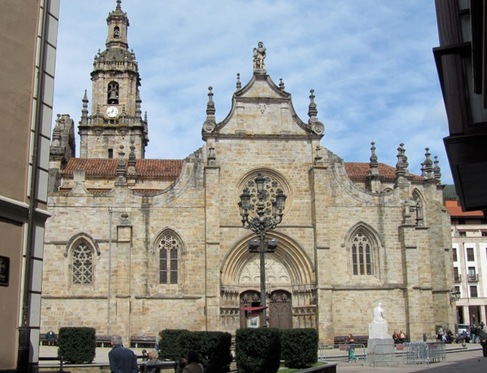


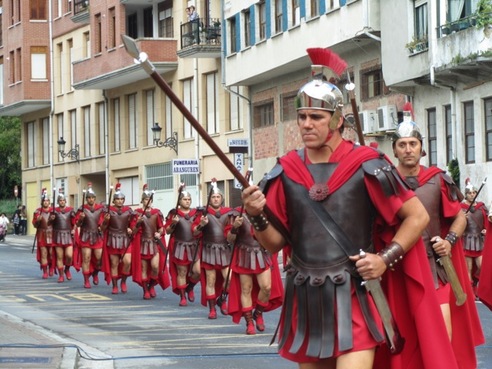
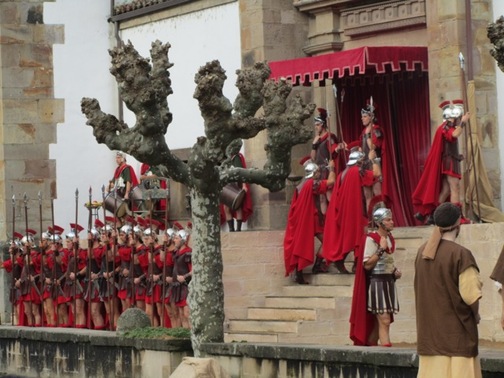



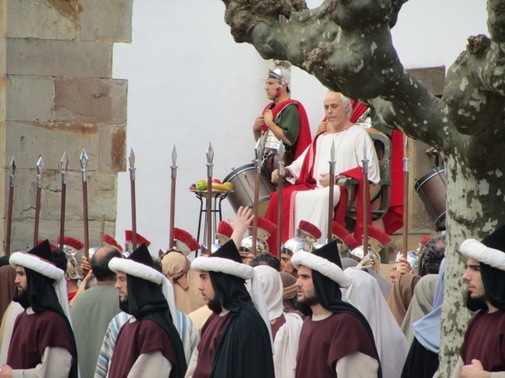



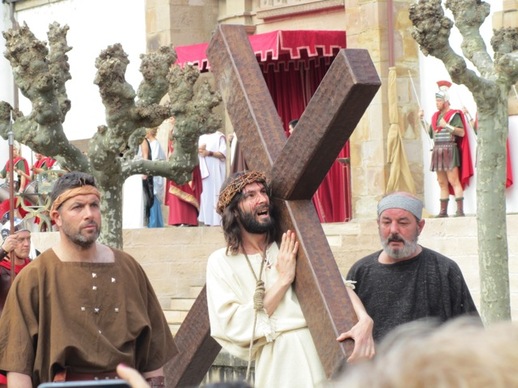
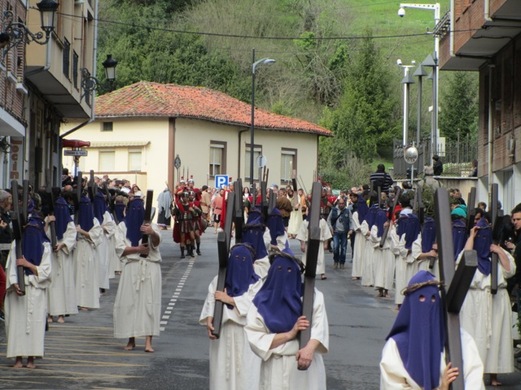











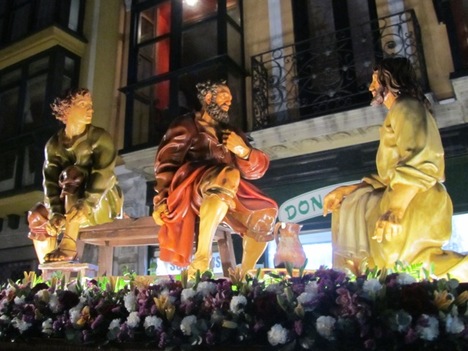

 RSS Feed
RSS Feed